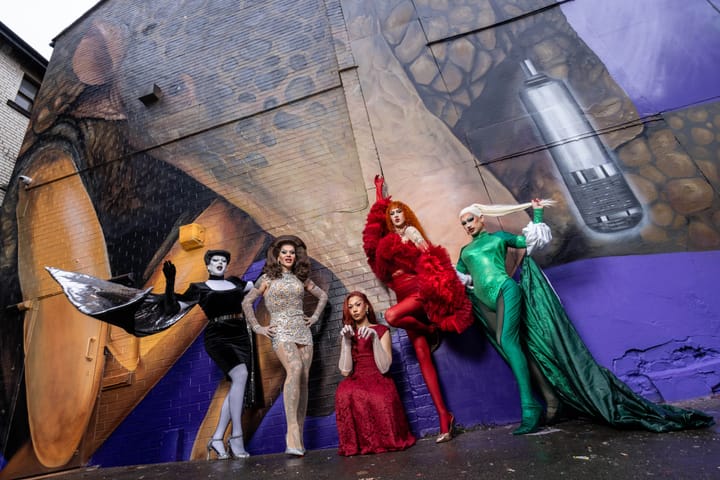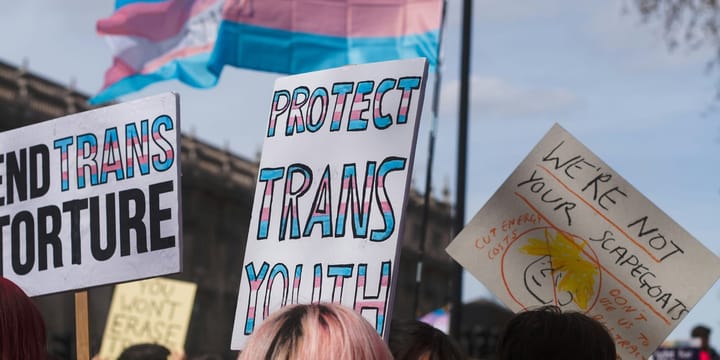Outside the EHRC, protest is still a right
The High Court has rejected an attempt to stop trans rights protests outside the EHRC. Leslie Clarke explores what the ruling means for free speech, the right to protest, and the growing tension between LGBTQ+ communities and the body meant to protect them.

This morning, the High Court handed down its full judgment in Fora Operations Ltd & The Office Group Properties Ltd v Persons Unknown [2025] EWHC 1438 (KB). The court ruled that leaseholders of Tintagel House, home to the Equality and Human Rights Commission (EHRC), did not have sufficient grounds to impose an injunction preventing protesters campaigning for trans rights from gathering outside the building until the EHRC's lease ends in January 2026.
On paper, this was a dispute over trespass. But what struck me most in Mr Justice Sheldon’s judgment was how it underscored two fundamental things:
1. No imminent risk: The judge found “no direct evidence that the protest may recur. At most, the evidence as to the possibility of a recurrence is indirect and circumstantial.” In other words, the court wasn’t convinced protestors would imminently return and create issues.
2. Liberty to protest: Crucially, the judgment gave due weight to Articles 10 and 11 of the European Convention on Human Rights, which protect freedom of expression and assembly. The Good Law Project successfully intervened in court to draw attention to this.
Reading the judgment, I realised its significance: there is no slippery slope leading to the banning of public dissent, particularly on issues affecting marginalised communities. It wasn’t a free pass, but rather an acknowledgement that peaceful protest is an integral part of public life, even when it is uncomfortable.
I thought back to that encampment from 26–30 May, staged by Trans Kids Deserve Better. Young activists camped outside Tintagel House, clutching banners demanding “LISTEN TO US.” They spoke about dignity, respect, and the need for genuine consultation on the EHRC’s guidance following the Supreme Court’s ruling on the definition of “sex.” They left peacefully, leaving no mess behind them, just signs affixed at the entrance.
So why did the leaseholders act? They claimed potential future disruption linked to the EHRC’s pending update to the Statutory Code of Practice, following For Women Scotland Ltd v Scottish Ministers [2025] UKSC 16. They wanted a blanket prohibition—even though the protest had ended.
The court said: stop, show us the evidence of harm. And when the link between protest and prejudice looked too speculative, the court refused.
Following the judgment, Good Law Project’s executive director, Jo Maugham, issued a pointed critique of the EHRC:
“A body in charge of safeguarding the right to protest is attacking it; a body in charge of defending free speech is silencing it; and a body set up to protect trans rights is undermining them.”
Harsh words. But they speak to a growing sense of betrayal among many in the LGBTQ+ community.
Let’s be clear: this judgment doesn’t give protestors a free pass to do anything they want. It doesn’t mean the EHRC has to listen. But it does say something crucial—that the right to protest, even outside your opponent’s office window, is still protected.
That matters, because protest is often the last tool, the last meaningful mechanism we have when institutions stop listening. And lately, many trans people feel that institutions have not just stopped listening but started actively working against them.
As someone who leads an LGBTQ+ organisation, I think about current developments every day. How should we protest in future? What is the most effective way to advocate for LGBTQ+ equality? How can we engage most effectively with politicians and the government?
In my opinion, we need both: loud, visible protests in the streets and more chairs at the decision-making tables. The former raises awareness, while the latter brings about change. Legislative change.
I have noticed recent campaigns, such as the Trans+ Solidarity Alliance's mass lobby, which aim to strike this balance. We need more of that. More organised, strategic action.
Apologies for the little detour; let's get back to the topic. This judgment affirms that protests, even those aimed at the EHRC, remain legally protected when conducted peacefully. It reminds us that legal recourse remains an option when other channels appear closed.
The leaseholders may have wanted certainty until January 2026. But Mr Justice Sheldon provided something even more vital: reassurance that protest, a public right even outside the offices of human rights regulators, is still upheld by the rule of law.





Comments ()